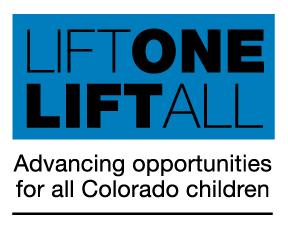Several provisions in the Colorado Constitution prevent the state and school districts from raising and expending funds necessary to establish and maintain a “thorough and uniform” system of free public schools. One of those provisions is the Gallagher Amendment,[1] passed in 1982 as part of a larger property tax measure referred by the legislature, which limits the valuation for assessment of residential real property.
OVERVIEW
Article X, section 3 of the Colorado Constitution, among other things, fixes the assessment rate (the percent of property value that is subject to taxation) for most non-residential real property at 29% of its actual value and lowered the assessment rate for residential real property from 30% to 21% of actual value. Subsection (1)(b), the “Gallagher Amendment,” requires residential assessment rates to be adjusted whenever property is revalued, currently every two years, to maintain a specific proportion of residential and non-residential assessed values. In other words, 45% of the state total assessed property value must come from residential property, and 55% of the state total assessed property value must come from non-residential property. Thus, whenever statewide residential property values rise faster than non-residential values, the residential assessment rate must be lowered to keep the 45% / 55% proportions constant. Conversely, the Gallagher Amendment requires an increase in the residential rate when growth in the value of non-residential property outpaces residential property, although such an increase is prohibited under TABOR.
From 1987 to 2004, residential property values grew significantly, particularly in the Front Range counties, and the Gallagher Amendment progressively reduced the residential assessment rate across the state from 21.00% to 7.96% of actual value. The effect has been to significantly reduce property tax revenues as a source of education funding and shift the property tax burden away from residential to nonresidential property owners.
What’s Wrong with the Gallagher Amendment
The Gallagher Amendment was intended to provide stability and uniformity in the level of assessed valuations across Colorado’s counties and protect the tax base of local governments. The effect, however, has been the opposite: it has deteriorated local tax bases and destroyed property tax and mill levy stability and uniformity. Particularly in school districts with predominantly residential property, the Gallagher Amendment has depressed the assessed valuation of their property tax base and the revenues that can be raised by their mill levies. The impact has been most significant in school districts outside of the Front Range, whose actual residential property values have not increased at the statewide rate. As a result, school district Public School Funding Act (PSFA) mill levies have generally declined and are significantly non-uniform across the state based upon the educationally irrelevant proportion of local residential to non-residential property values and the local rate of change in actual residential property values.
The Gallagher Amendment, particularly in conjunction with TABOR, has progressively reduced local property tax as an actual and potential source of school funding and has resulted in unequal and inequitable differences in school district mill levy rates across the state. Traditionally, mill levies were allowed to “float” (that is, districts could increase their property tax rates to compensate for the decrease in the assessment rate) to counteract cyclical economic cycles and protect local government’s primary revenue source. However, TABOR prevents mill levies from increasing without a vote of the people. As a result, if the assessed value of a property declines, the mill levy can no longer counteract the effect that reduced values have on the amount of property tax collected. In addition, if overall property values in a jurisdiction go up so fast that the tax revenue would outpace TABOR’s allowable revenue limit, the jurisdiction may need to lower the mill levy. In this case, TABOR prevents the jurisdiction from raising the mill levy to its previous levels without a vote.
Additional Resources on the Gallagher Amendment
- Colorado General Assembly Legislative Council, House Joint Resolution 03-1033 Study: TABOR, Amendment 23, the Gallagher Amendment, and Other Fiscal Issues
- Colorado Legislative Council, Issue Brief: Property Taxes
- ColoradoBudget.com, Gallagher 101
- Great Education Colorado, TABOR/Gallagher
[1] Colo. Const., art. X, §3(1)(b).
